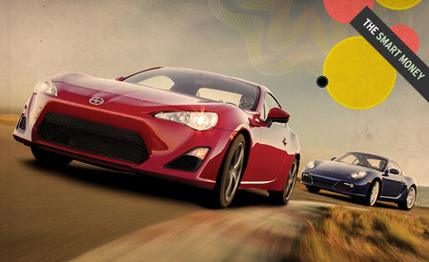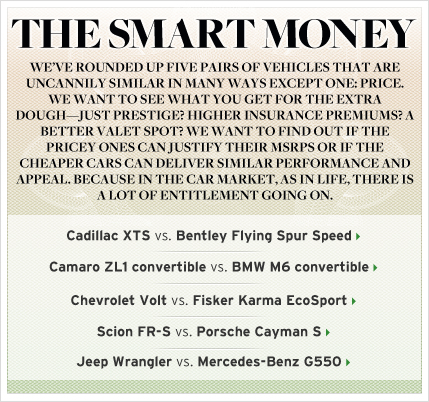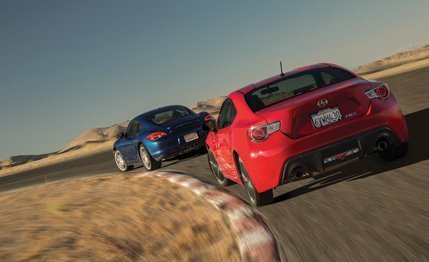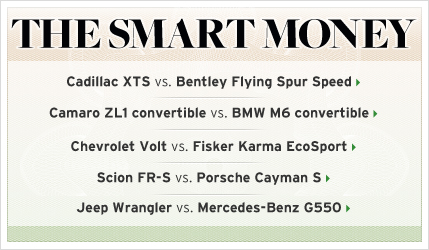 Comparison Tests
Comparison Tests


It’s rotten what we’re doing, and we admit it. Totally rotten and unfair and, well, maybe just a little bit un-American. We’re taking the most enthralling new sports car in a generation—my God, it’s actually affordable!—and throwing it under the galloping hooves of a semi-exotic thoroughbred that most of us here couldn’t afford even if we never move out of our parents’ basements.
(See, we’re saving you the trouble of writing this stuff in letters.)
By whatever strange forces create unlikely allies, Toyota and Subaru got together and gave our kind a gift: a rear-drive sports coupe with a 2700ish-pound curb weight and the reflexes of a kit fox. It has exactly enough seats and trunk space to make it halfway practical, and they didn’t even louse up the styling. We should be sending love letters and boxes of chocolates to Japan for the $25,092 Scion FR-S (and its sister car, the Subaru BRZ) instead of throwing it against a $76,560 Porsche Cayman S. Yes, we are ungrateful wretches, and we know it.

But with these asymmetrical comparison tests we hope to determine, semi-scientifically, whether a glass is indeed half-full or half-empty. It is not meant to be a buyers guide, as we assume the buyers of these two cars don’t get invited to the same pool parties. Rather, we want to see how big a factor price is with these two sports cars whose goals are essentially the same: to spread pavement-sucking, boxer-engine joy.

While Porsche is busy having kittens with Volkswagen—the product pipeline holds the Macan small SUV, the 918, an Audi R8–based bridge car between the 911 and the 918, and possibly a front-engined GT—the Cayman has been the keeper of the old flame. At 3034 pounds and with its engine amidships, the 320-hp S feels like what the ballooning 911 used to be: light, simple, small, intimate, and less about looking rich than being really quick (though the Cayman manages both).
Typical of Porsche, there are myriad options on the Cayman’s price list, but our car had mostly the highlights: the $3640 Bose super stereo/navigation, a $2230 Convenience package, Porsche Active Suspension Management (PASM) for $2090, the $1550 Carrera S II wheels, a limited-slip differential for $950—which seems oddly cheap when you pay $710 just for the Aqua Blue paint—plus some other stuff.
In contrast, the FR-S came to us as naked as a newborn, augmented by only a $95 trunk mat and $67 wheel locks. Coincidentally, the cheapest option available on a Cayman S is $95: a leather key pouch to match the car’s interior.
In case you’ve been held hostage by Mennonites this past year, the FR-S and the BRZ are both being produced on the same line at Subaru’s Gunma factory in Japan. Scion is shooting for a younger buyer, hence the FR-S has a lower price than the BRZ.
So, unlike the BRZ, there is only one FR-S trim level, and it doesn’t offer some of the BRZ Limited’s niceties—namely navigation, automatic climate control, a keyless engine-start button, and some fancy toggle switches. The 2.0-liter flat-four with its dual port/direct-injection system is common to both cars, as are most of the other specifications, absolutely none of which are bad.
But is the Porsche worth three times the Scion’s price? It’s not our money, so it doesn’t really matter what we say, but like Congress, that’s never stopped us before.
